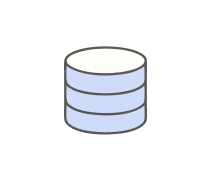Driver types are used to categorize the technology used to connect to...
This is algorithms that does not use any key, it is known as message...
In this Data processing Model,the client communicates directly to the...
The term "encrypting " pertains to converting plaintext to ciphertext,...
This method is use to execute any SQL statement with a "SELECT"...
This method is used to execute INSERT, DELETE, UPDATE , and other SQL...
The Result Set can not be modified and hence, It is not updatable in...
JDBC is ODBC translated into an object-oriented interface that is...
Data integrity is to protect data from getting tampered,while it is on...
"(Only)algorithm" such as
This method is used for retrieving a string value (SQL type VARCHAR)...
It reefers to the ability to move backward as well as forward through...
The prepareStatment() method sends SQL query to the database. and this...
Single bits or a block of bits can be encrypted into cipher blocks
A Rowset Object provides scrollability and updatabilitu for any kind...
Statement and PreparedStatement is inherited from Statement Interface....
The CallableStatment object contains the SQL statments.
Which class is a disconnected rowset.
The class is used to sign and check the authenticity of digital...
The class is used to generate public key certificates.
The Type 1 driver is also known as JDBC-ODBC bridge plus ODBC driver.
Cipher objects are created using this method of the cipher class.
The cipher object is initialized by the init() method?
This is an Application Programming Interface provided by Microsoft for...
This refers to the ability to check whether the cursor stays open...
This is as asymmetric cryptography, It operates under two different...
This parameter is used to pass values into a store procedure.The...
This class is a database of keys and certificates
A cursor that can only be used to process from the beginning of...
This is a framework written in java to access and develop...
Using System;
...
Interface can not contain constants, data fields, contructors,...
This is the mechanism of encoding information in a secret coded form,...
This object does not contain the stored procedure itself but contains...
If row value is 0, this method has no effect.If row value is positive,...
This transforms the input, called the plaintext, to an output, known...
The class is used to transform opaque keys of type Key into key...
Single-bit ciphers are called:
Most these implementations mix a random number, known as the "salt"...
In this Environment, the java application is the client and DBMS is...
This Objects are used to receive and store the data in the same form...
This method is used for retrieving the value from current row as...
The 'Native API-Java/Party Java' is Driver Type
Eat();Run();Sound();
With this padding technique a short block is padded with a repeating...
The 'Native Protocol - All Java' is Driver Type
This Parameter behaves like an initialized variable.
OUT Parameter.- 3 choices.
The Code : "DES/CBC/PKCS5Padding" is the form of
Calling absolute(1) is equivalent to calling last()
This object connects to a data source only to read data from a...
The class is use to hash value of the specified data.
This comprises the mapping of one or more permissions with a class.
A client application uses stored procedures increases the network...
This Method return an Integer value indicating the row count.
This ensures that a user or a business organization or a program...
An abstract class can be sealed
Which statments are true?
A ResultSet object contains a set of rows from a result set or some...
Abstact method ,which contains at least one statement, is declared in...
Which statements are true?- 3 choices
Which statements are true?
The product components of JDBC are:
Which statements are true?-3 choices
Cryptography is essential for making a application safe and secure,...
















